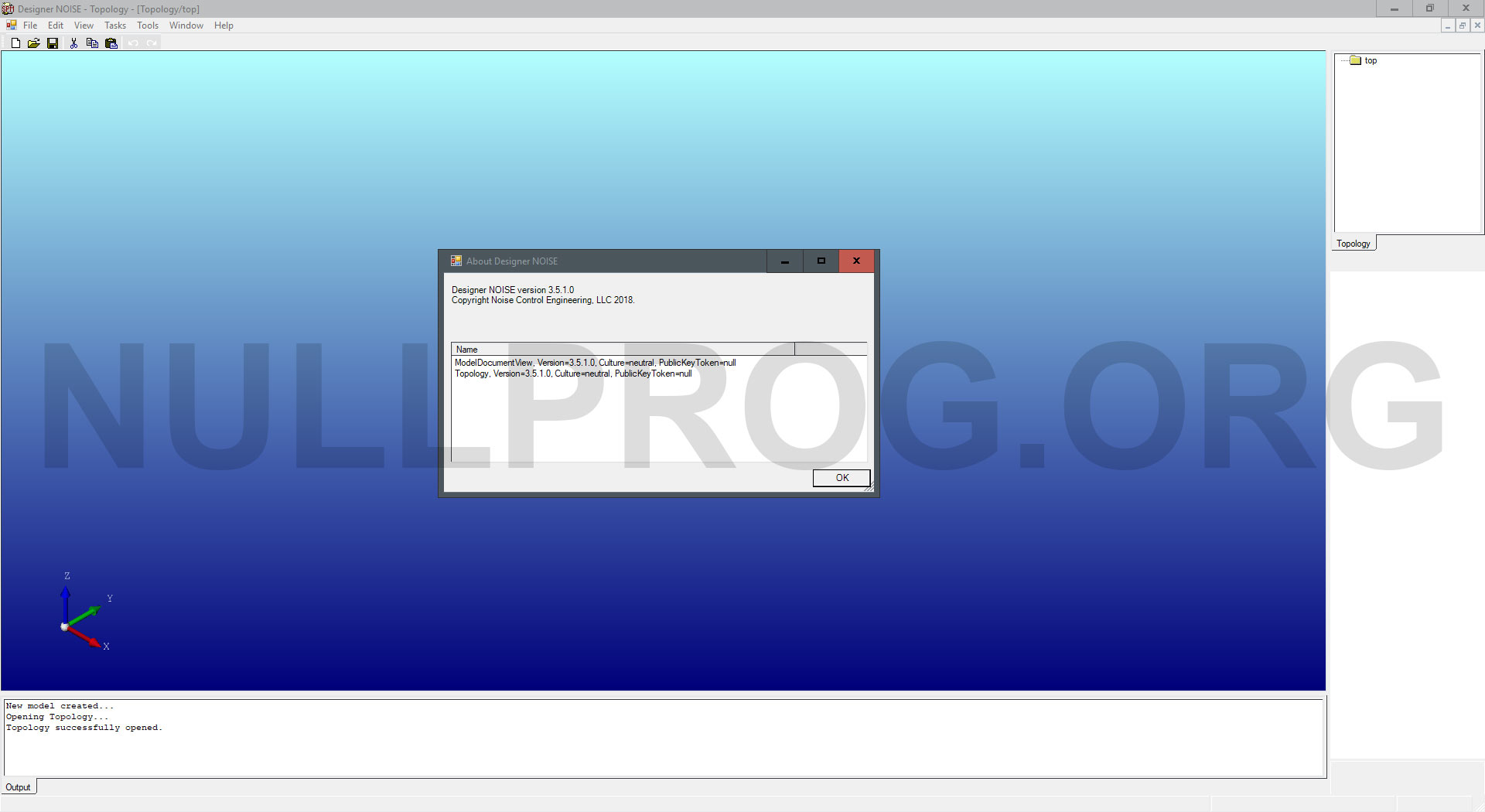Designer-NOISE is a software program designed to allow for quick and accurate predictions of noise levels on surface ships and other stiffened plate structures. Octave-band and overall A-weighted noise levels are calculated based on sound propagation from machinery, propeller, and wave slap sources via airborne and structureborne paths. Nearly any machinery source can be modeled, ranging from propulsion engines to fan coil units.
HVAC analyses can also be performed, and the resulting noise levels can be combined with machinery noise results. Most importantly, the causes of noise in any compartment can be evaluated, and various treatment options can be explored, including resiliently mounting equipment, adding absorptive insulation and/or damping materials, etc. By using Designer-NOISE® treatments can be quickly optimized to meet acoustic goals while minimizing impacts to space, weight, and cost.

Designer-NOISE Predicting & Controlling Shipboard Noise
Designer-NOISE® was created under a US Navy Small Business Innovative Research (SBIR) program, N98-092, with the guidance and support of Mr. Kurt Yankaskas of Human Systems Integration group at NAVSEA.
Who can benefit? In the short term, Designer-NOISE® can allow shipbuilders and designers to produce quieter vessels more effectively and efficiently. Noise can be analyzed early in the design process to help with the overall design of the vessel, equipment selection, and treatment requirements. Furthermore, modifications to the vessel that occur as the design progresses can be assessed from a noise perspective, allowing for a more complete cost benefit analysis. In the long run, ship operators and crews will benefit as a result of lower noise levels leading to increased productivity, lower fatigue, and a reduced risk of long-term hearing damage, leading to lower cost of ownership. With the proper attention paid to noise by the marine community in general, the noise levels onboard ships can be significantly decreased and noise control treatments can be optimally designed with respect to acoustic and non-acoustic parameters.
How does it work?
Designer-NOISE uses a 3-D Graphical User Interface (GUI) to facilitate rapid model creation and entry of model parameters. The 3-D GUI provides the user with a more intuitive and realistic representation of the vessel, and allows for improved ‘bookkeeping’ as compared with spreadsheet methods. The core solver uses a hybrid Statistical Energy Analysis approach to predict spreading of vibration throughout the vessel. Architectural acoustic methods are used to predict the spreading of airborne noise. Solution time for most models is on the order of seconds, allowing the user to perform rapid tradeoff studies of potential noise control treatments, sources, etc. The prediction accuracy is very high, usually within 3 dB for A-weighted noise levels.
What does it take to build a model? Models can typically be created in a matter of days once the appropriate information has been obtained. Inputs are straight-forward, physical property information such as material types, thicknesses, frame spacing, etc. The acoustical properties and effectiveness of many materials and treatments are incorporated into the program, eliminating the need for specific user knowledge of acoustical details. Models are initiated by assigning planes and surfaces at appropriate locations to represent decks and bulkheads. Physical properties are then assigned to each modeled face, such as structural material, plating thickness, stiffener spacing, etc. Outfitting such as thermal and fire insulation and joiner facings are then assigned, along with any acoustical treatments. Sources are added by defining the physical size and location, as well as acoustical source levels (sound pressure levels and vibration acceleration). Because Designer-NOISE® is meant specifically for modeling ship noise, all inputs have been streamlined to reduce the total amount of information required by the user.
Developer : Website
Want BUY in much lower price?
E-mail : nullprog.exe@gmail.com
